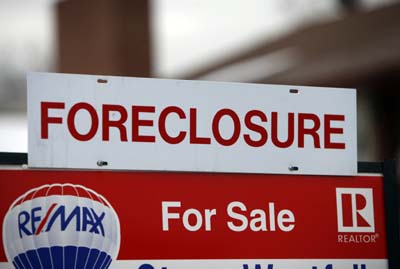Latino families are draining their savings and taking second
jobs yet losing an average of $89,000 due to foreclosure and
doubling up with friends or relatives, resulting in overcrowding
and stress.
By Jondi Gumz
Latino families are draining their savings and taking second jobs yet losing an average of $89,000 due to foreclosure and doubling up with friends or relatives, resulting in overcrowding and stress.
The National Council of La Raza and the Center for Community Capital at University of North Carolina Chapel Hill released a report Tuesday on the human cost of foreclosure. Researchers said families that lost a home remain hopeful they would attain the American dream of home ownership once again.
“We were struck by their optimism and resilience,” said Janis Bowdler of La Raza’s Wealth-Building Policy Project.
The findings were based on interviews with 25 Latino families in five regions including California’s Central Valley. Researchers also cited national statistics indicating 60 percent of Latinos have observed foreclosures in their neighborhood and cash buyers accounted for 25 percent of second-quarter sales last year, turning owner-occupied homes into investment properties.
Bowdler said the Home Affordable Modification Program, announced by President Obama a year ago, is not helping, largely because the program is voluntary for lenders.
“Now you have complications where families have lost a job,” Bowdler said. “They’re tapping savings and retirement accounts and borrowing from friends and family. Banks are standing on the sideline and not modifying mortgages.”
Attorney Phyllis Shafton Katz of California Rural Legal Assistance in Watsonville,
which is 77 percent Latino, made the same assessment last year.
Watsonville and Freedom saw half of the county’s 727 foreclosure sales last year, and two-thirds of the 906 foreclosure sales the year before.
Too many homes in Watsonville are “underwater,” worth less than what is owed, for the federal programs to work, Katz said, and homeowners don’t have enough income to qualify for loans.
One example of how values have changed: 100 Pelican Drive, behind the Overlook shopping center, was purchased for $522,000 in 2004 by a Latino buyer. It was foreclosed last year, and resold for $425,000.
Roberto Quercia, co-author of the foreclosure report and a professor of city planning at UNC, said only half his students can tell the difference between an affordable mortgage and a pricey predatory mortgage, indicating the need for financial education.
La Raza recommends Congress enact a refundable tax credit to subsidize an annual visit to a certified financial planner.
“We need Congress to work out better solutions,” said Carol Ornelas of Visionary Home Builders, a nonprofit in Stockton, the city that was America’s foreclosure capital in 2008. “We need them now.”










